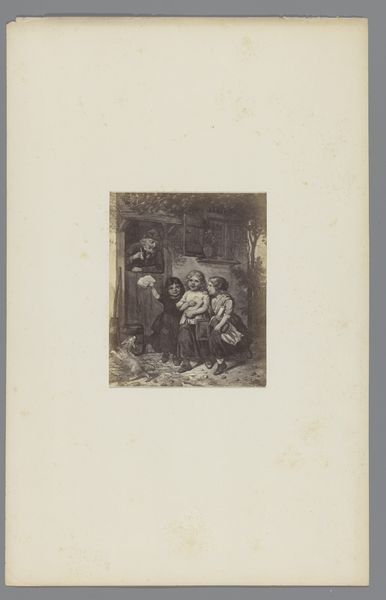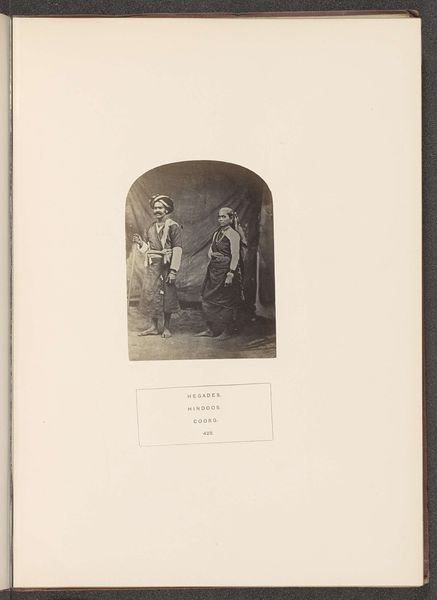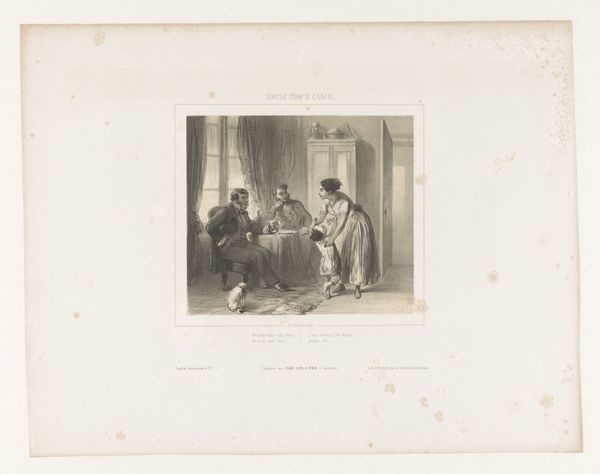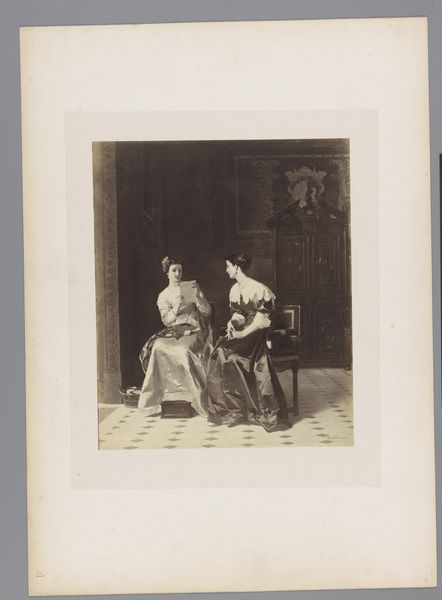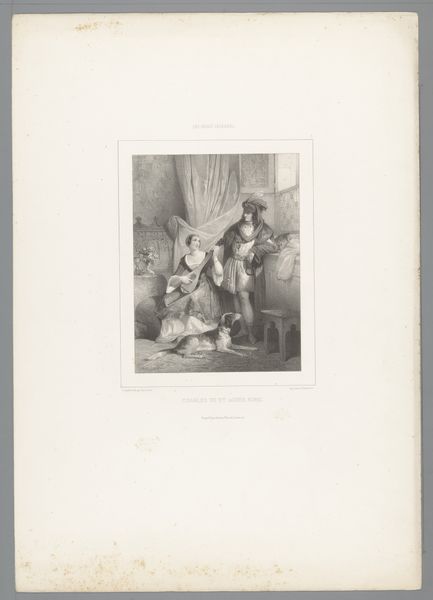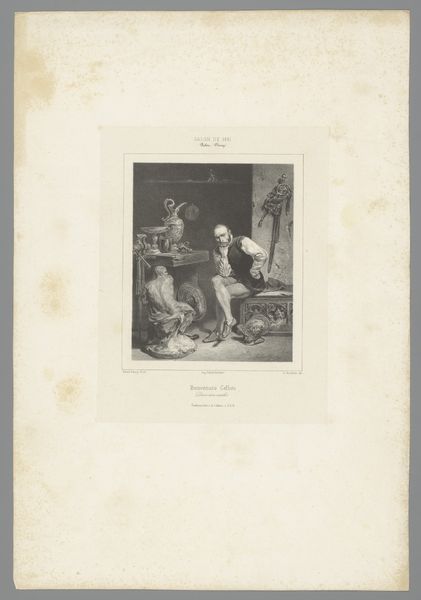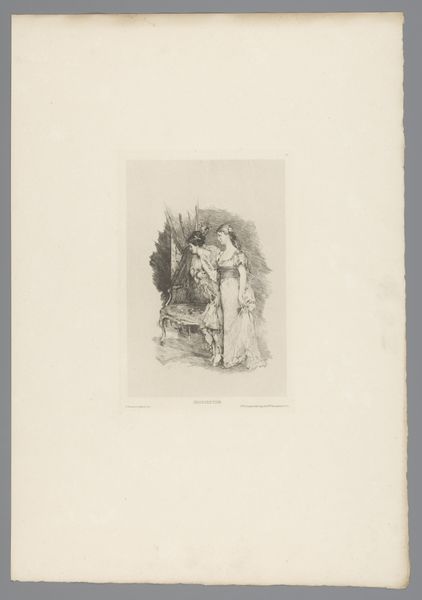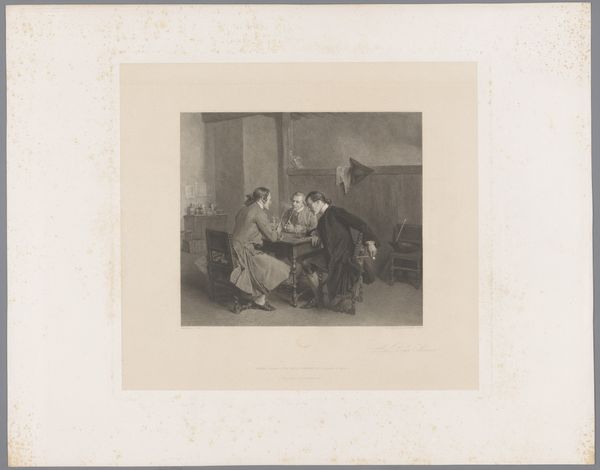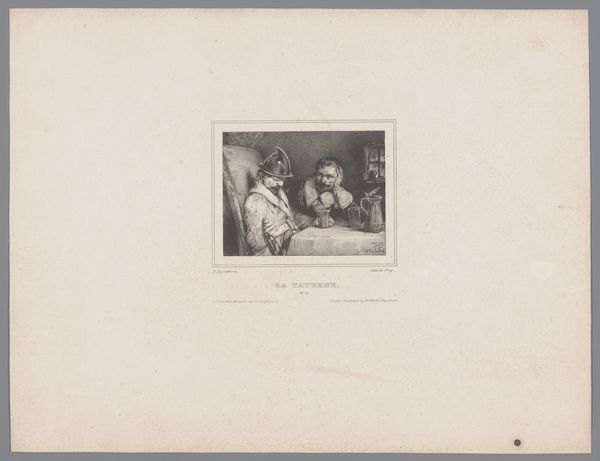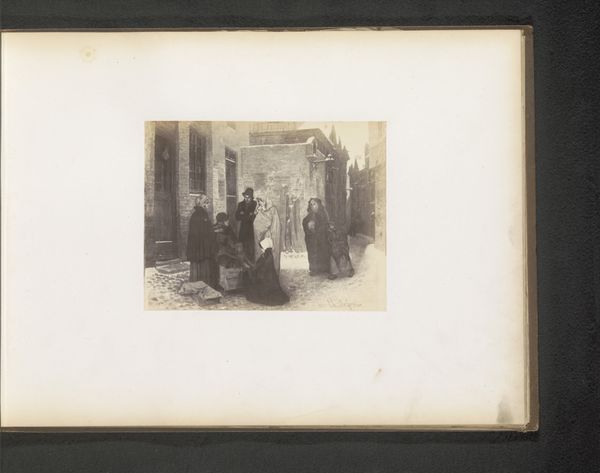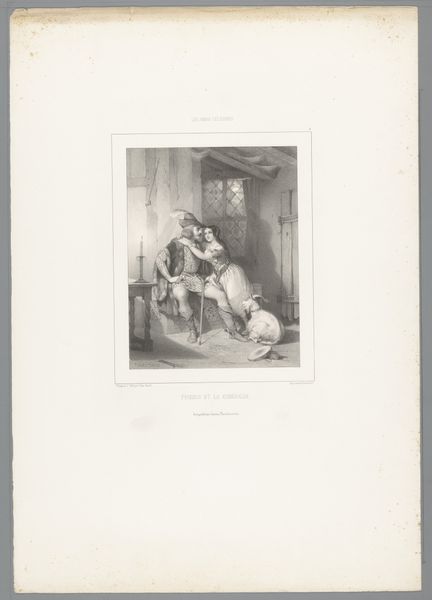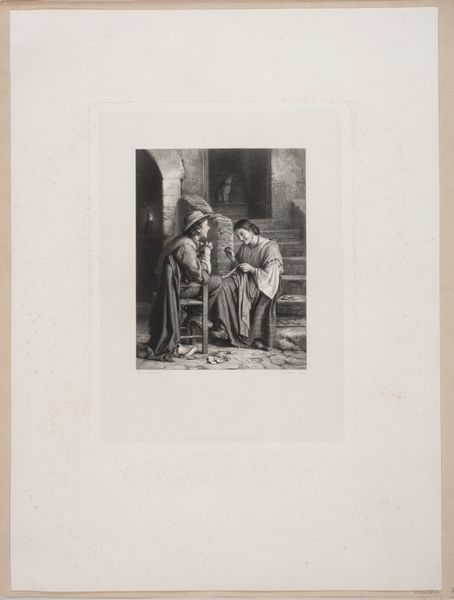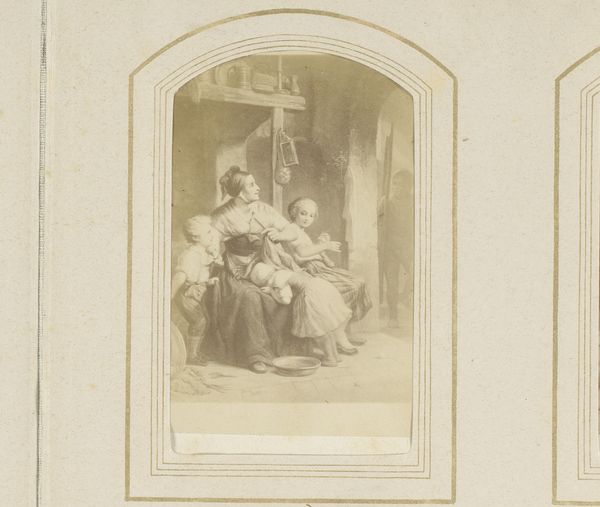
Fotoreproductie van een schilderij van een man die een glaasje drank krijgt in een kroeg door Jean Baptiste Madou before 1863
0:00
0:00
Dimensions: height 254 mm, width 205 mm
Copyright: Rijks Museum: Open Domain
Curator: Ah, "Fotoreproductie van een schilderij van een man die een glaasje drank krijgt in een kroeg" by Jean Baptiste Madou, created before 1863. It’s an engraving of a genre painting. Editor: The immediate sense is of quiet intimacy, yet shadowed by melancholy. The gray tones create such a somber atmosphere, it feels more profound than just a casual scene. Curator: Engravings such as these, which became widely accessible thanks to advancements in printing technology, helped disseminate artistic visions to a much broader audience. They fueled the appetite of a rising middle class eager for narratives of everyday life. Editor: The interplay between light and shadow definitely directs our eyes to specific details. Note how the man's face is highlighted. It suggests an effort to showcase emotion through tonal range, doesn't it? Almost stage-like. Curator: Absolutely. And let’s consider Madou himself. He worked as a lithographer and printer before becoming a painter, so the making of prints held significance in the construction of his social commentary. Prints gave voice to common folks and offered moralizing tales. Editor: Semiotics come to mind here. The small glass, her posture, the cane he leans on – all operate as signifiers of a larger narrative around health, economic hardship, or even moral failings perhaps. What do you make of their specific placements within the composition? Curator: Positioning figures was everything in these anecdotal scenes, signaling socio-economic relationships. His ragged clothing beside her relative cleanliness and attire hint to the man's possible working status while it is quite apparent the young lady who gives him this "small glass" might represent a certain level of affluence, maybe ownership, or employ. Editor: Precisely. There's definitely a story etched into the forms, the contrasts creating a visually compelling moment laden with social nuances. Curator: This engraving allows us to see art that became, more than just artwork; an agent to shape thoughts about social welfare. Editor: I find it interesting how this modest print, this "fotoreproductie," becomes so much more—a complex visual field that speaks about class, accessibility, and narrative strategies of its era. Thank you!
Comments
No comments
Be the first to comment and join the conversation on the ultimate creative platform.
